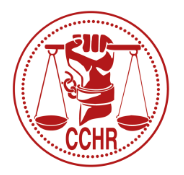
Oxazepam is in the benzodiazepine family of drugs. Benzodiazepines are known as central nervous system depressants, which are medicines that slow down the nervous system.
In Sweden enough of it is being prescribed that the quantity of the drug passing through human patients in their urine into the sewer system and then into waterways that the perch in those waters have become more anti-social and are showing risky behavior toward the pike who prey on them.
A recent study was done at Sweden’s UmeåUniversity.
The quantity of Oxazepam in the bodies of these perch in the FyrisRiver in central Sweden was 6 times the amount found in the water. So, clearly, the drug builds up in the fish as it lives in this drug polluted water.
Researchers at KTH Royal Institute of Technology in Stockholm have developed elaborate new water treatment technology – called membrane distallation – to separate drug residues from sewage. Their concern is from the viewpoint of benefiting ecology, wildlife and control of algae in the water.
What about the effects on the people who are given so much of this harmful drug that the excess of the drug in their urine is contaminating water supplies!
Oxazepam has these side effect warnings:
- Nightmares
- Mortality Risk Increased
- Suicide Risk, Suicide Attempts, Suicide
- Birth Defects
- Depressed mood or severe confusion
- Muscle weakness or extreme unsteadiness
- Skin rash
- Hallucinations or changes in behavior
- Irregular heart beat
- Slurred speech
- Difficulty breathing
And to top it off, Oxazepam is addictive and requests a special slow monitored withdrawal to stop taking the drug.
The pharmaceutical industry’s drive to sell more and more drugs has led to this absurd situation where the “runoff” into the water supply has ecologists worried about poisoning the food supply when it’s human beings who are being poisoned in the first place.
Back in September of 2011 a bill called H.R. 2939 The Pharmaceutical Stewardship Act was introduced in the House of Representatives following a study done in 2008 showing that in 24 of 28 large American cities the drinking water was contaminated with pharmaceuticals of all kinds.
It called for creating a non-profit organization to develop a nationwide program for disposing of medicines and a strategy for preventing pharmaceutical contaminants from polluting waterways during drug production.
The goal of the bill was to give the pharmaceutical industry plenty of flexibility to implement the cleanup agenda. The drug producers would pay for cleanup but they could control their own funds and operate the program as efficiently as possible in the private sector. Each drug company’s cost would be determined by their market share of the drugs needing cleanup.
The drug companies wanted no part of this. The bill was referred to committee and died.
When the drug makers take responsibility and stop selling harmful drugs like Oxazepam, then our citizens, fish and waterways might have a chance to survive.
http://www.ncbi.nlm.nih.gov/pubmedhealth/PMHT0011526/?report=details#warning
http://www.kth.se/en/aktuellt/nyheter/tekniken-som-renar-avloppsvatten-fran-lakemedel-1.370072
http://www.pharmalot.com/2011/09/the-witches-brew-of-drugs-in-the-water-supply/


0 Comments